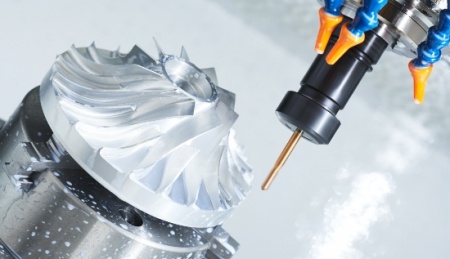
Peter Jacobs, Senior Director of Marketing at CNC Masters shares how a meaningful combination of CNC machining and 3D Printing can help manufacture even the most intricate parts and boost overall productivity.
The advancing 3D printing capabilities have made it convenient for manufacturers to use additive manufacturing to develop parts from a wide variety of materials. These materials include polymers such as ABS, PLA, TPE, and carbon fibre composites, polycarbonates, and nylon.
Alongside 3D printing, precision CNC machining also enjoys a crucial role in the additive manufacturing process, with a new process called hybrid manufacturing quickly assuming its hold in the industry.
Combining CNC machining and 3D printing can meet all crucial design requirements and eliminate limitations in these individual domains.
Benefits of Combining Machining and 3D Printing
Here’s why the combination of CNC machining and 3D printing is relevant and the benefits that will follow:
- Conservation of Time
The process of 3D printing a part and then having it delivered to the next section for CNC machining involves too many steps; however, this process is relatively less time-consuming relative to injection moulding.
In Injection moulding, the design and development of a specialised tool must go through every workpiece in the moulding process, making it more time-consuming.
While we can alternatively use 3D printed injection moulds to reduce production time, incorporating the potential of CNC machining can be more fruitful.
We can seamlessly tweak the digital files that end up getting 3D printed as prototypes rather than making alterations to an existing injection moulding machine tool.
- Higher Tolerance Rate
3D printing has encountered hindrances in its progress due to the tolerances of modern 3D printers. Many end-use parts have specific tolerances and other vital requirements that are only feasible by incumbent manufacturing methods.
Unlike 3D printing, CNC machining is consistent. It offers a more refined product because its equipment does not exhibit sensitivity to heat as a 3D printer, which might warp and distort the product and result in uncertain runs of products.
Merging the two domains provides us with the perks of rapid prototyping brought to the table by 3D printers. It also enables us to dial in the tolerance from 0.1 mm to 0.3 mm as anticipated from a DMLS or SLS 3D printer to about 0.025 to 0.125 mm rendered by CNC Milling Machines.
- Use a Bigger Workpiece
A congregation of these two domains involves 3D printing a part and then forwarding it to CNC milling to balance the final tolerances and providing it with the desired finish.
There has been excitements about merging these two technologies into one machine. This scenario could result in something that resembles the industrial-scale hybrid milling machines.
Such machines are speculated to harbour a build volume of about 40 feet in diameter and 10 feet in height. These hybrid 3D printing-milling machines can mill the surface of a new 3D print while the operation would still be underway.
With state-of-the-art CNC Benchtop Milling Machines, you can enjoy peak performance while occupying a minimum floor.
Likely Mergers of CNC Machining and 3D Printing
Some of the cases where we can successfully implement the merger of 3D printing and CNC machining for the manufacturing process includes:
- Plastic Manufacturing
If we intend to develop a component from plastic, it is essential to consider that additive manufacturing might not adequately deliver the needed precision as we would require high tolerances.
In such cases, employing 3D printing to manufacture the component and then bring in CNC machining to trim it to the desired dimensions could be beneficial. This gesture can help dispose of any shortcomings that may have surfaced due to the additive manufacturing hardware.
Еще больше новостей |
